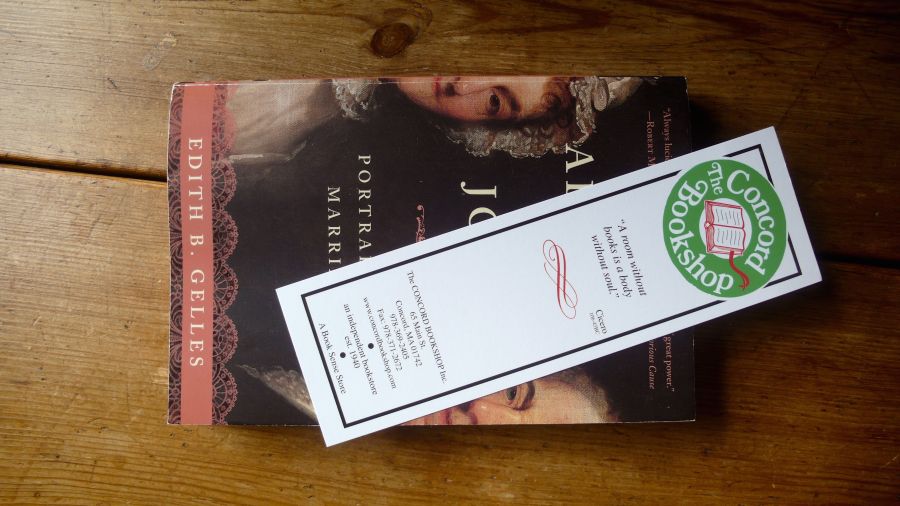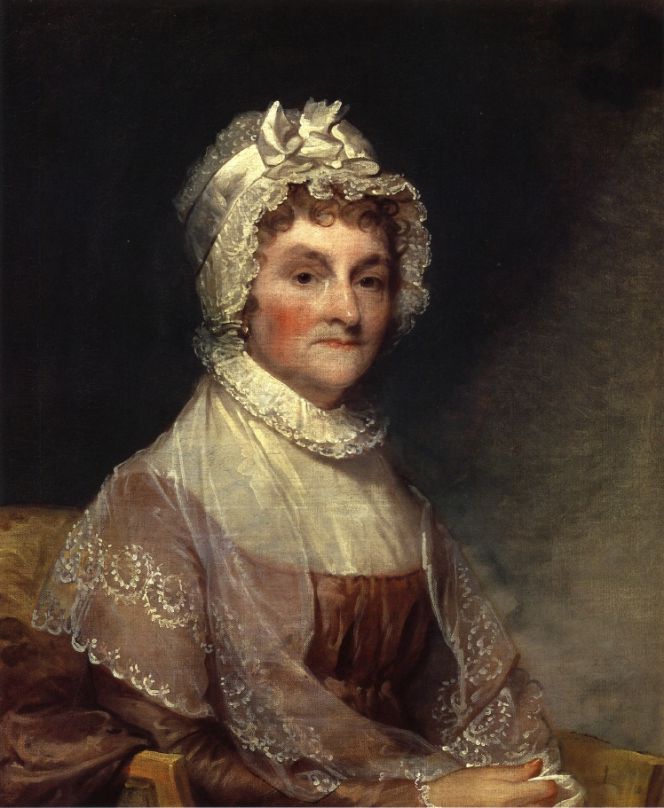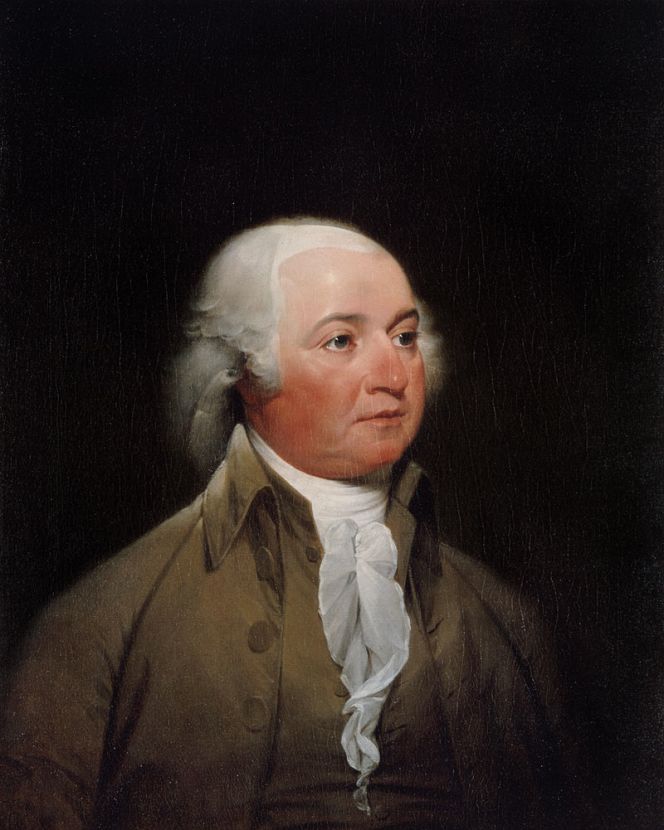More specialised textile terms or materials were not lacking in the correspondence:
- bandano – Abigail only: 1780-1782 (5 results).
- calico – Abigail only: 1780-1782 (9 results).
- caliminco – Abigail only: 1775-1782 (8 results).
- cambrick – Abigail 1781-1783 & John once 1780 (5 results).
- damask – Abigail only: 1775, 1782, 1783 & 1794 (4 results).
- denim – Abigail only: 1782 (1 result).
- diaper – Abigail only: 1780 & twice 1781 (3 results).
- durants – Abigail only: 1780 (1 results).
- fans – Abigail only: 1780 (2 results).
- gauze – Abigail only: 1780-1782 (9 results).
- muslin – Abigail only: 1780-1782 (7 results).
- serge – Abigail only: 1782 (1 result).
- tambour – Abigail only: 1781 (2 results).
- tamies – Abigail only: 1780-1782 (4 results).
- velvet – Abigail: 1781 & twice 1782, John: 1774, 1777, 1778 & 1797 (7 results).
What is evident while studying the letters is that special textile terms were almost solely a knowledge that Abigail possessed, John did not seem to have been familiar with qualities like: calico, caliminco, damask, diaper, gauze, muslin etc. If he could not see the difference between the various fabrics that Abigail wished him to purchase, instead John’s contacts abroad must either have worked within the textile trade or had a good understanding of luxury fabrics! One such clear example can be read in a letter from Abigail to John, on May 25th in 1781; including a List of Articles wanted from Holland. ‘A List of Articles per Capt. Brown. Half a Doz. Tambour worked Muslin hankerchiefs. 9 Ells Book Muslin. 1 pd. of white Threads. 12 Ells of light crimson caliminco. 1 peice of coarse cambrick. Any light wollen Stuffs that will answer for winter Gowns. 3 coulourd waveing plumes (all Stolen from Capt. Jones). A small Box of flowers for Miss N-y [Nabby], with a couple of peices of Genteel Ribbon. 6 Ells of white flowerd Gauze. 1 peice of fine Linnen.’ Special textile terms were particularly frequent during the years when Abigail supplemented the family income by selling clothes or supplying her uncle Cotton Tufts and cousin Cotton Tufts Jr. in their commercial trade. A more common vocabulary for various garments was mentioned by both of them, foremost the following listed below. Still, even here, Abigail’s letters give more examples of ordinary clothing and fashion accessories.
- cloaths/cloathed/cloathing – a matter of written conversation in many situations by both Abigail and John (1774-97) connected to personal garments or the family’s need for clothing & bed clothes, but also manufacturing or trading in cloths (52 results).
- coat – Abigail: 1777, 1794 & 1797 & John: 1764, 1778 & 1799 (6 results).
- gown – Abigail only: 1779-1794 (11 results).
- jacket – Abigail only: 1782-1783 (2 results).
- lace – Abigail: 1780 three times & 1782 twice. John: 1774 twice, 1776 & 1778 (9 results).
- hankerchiefs – Abigail only: 1775-1782 (16 results).
- rags – Abigail: 1776 & John: 1764 & 1777 (3 results).
- ribbon – Abigail: 1780-1782 & John: 1779 & 1788 (12 result, whereof John 2).
- shirts – Abigail only: 1782-1797 (3 results).
- trousers – Abigail only: 1782 (1 result).
- thread – Abigail: 1776-1782 & John: 1776 (11 results, whereof John 1).
- waistcoat – Abigail: 1794 & John: 1764 (2 results).
 Independence Hall in Philadelphia (completed 1753) was where John Adams went on with his daily work during several periods, and for that reason numerous letters were posted to Abigail from the city. Among many detailed notes, he did the following enlightening observation about the possibilities for the domestic textile trade and manufacturing in a political unstable time from Philadelphia to his wife on May 28th in 1777: ‘You will see by the inclosed Papers, among the Advertisements, how the Spirit of Manufacturing grows. There never was a Time when there was such full Employment, for every Man, Woman and Child, in this City. Spinning, Knitting, Weaving, every Tradesman is as full as possible. Wool and Flax in great Demand.’ Photo: The IK Foundation, in 2014
Independence Hall in Philadelphia (completed 1753) was where John Adams went on with his daily work during several periods, and for that reason numerous letters were posted to Abigail from the city. Among many detailed notes, he did the following enlightening observation about the possibilities for the domestic textile trade and manufacturing in a political unstable time from Philadelphia to his wife on May 28th in 1777: ‘You will see by the inclosed Papers, among the Advertisements, how the Spirit of Manufacturing grows. There never was a Time when there was such full Employment, for every Man, Woman and Child, in this City. Spinning, Knitting, Weaving, every Tradesman is as full as possible. Wool and Flax in great Demand.’ Photo: The IK Foundation, in 2014Sources:
- Gelles, Edith B, Abigail & John – Portrait of a Marriage, 2009.
- Independence Hall, Philadelphia, Pennsylvania, USA. (Visit in 2014: “Bridge Builder Expeditions – North America”, The IK Foundation)
- Massachusetts Historical Society, The Correspondence between John and Abigail Adams; The original letters can be studied parallel to the transcribed version. Digital source (“textile” search terms & quotes from the transcribed letters).




 Crowdfunding Campaign
Crowdfunding Campaign











